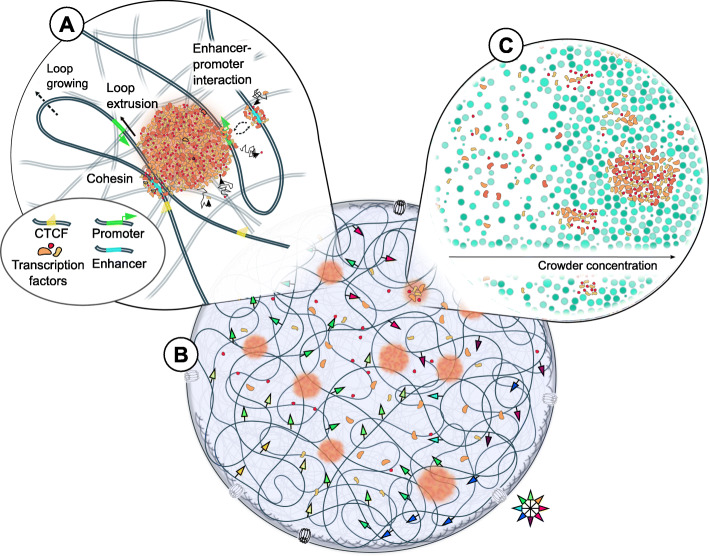Fig. 3.
Mechanisms for chromatin organization and dynamics during transcription. (A) The transcriptional hubs are formed by liquid-liquid phase separation of transcription factors, which in turn is mediated by the local crowding conditions. TFs binding to both enhancer and promoter mediate enhancer-promoter contacts by an effective attraction exerted by the LLPS property of transcription factories. Once transcription is initiated by these enhancer-promoter contacts, transcription elongation proceeds by reeling the transcribed gene body along the transcription factory. Loop extrusion by cohesin can additionally establish transient enhancer-promoter contacts, and the turnover time of cohesin and CTCF regulates the frequency of these contacts. Loop extrusion dynamics and the placement of (semi-) permeable border elements may thus regulate transcription. (B) The nucleus is sprinkled with transcription factories to which chromatin is tethered. The resulting network of transcriptional hubs restricts chromatin motion and induces a stiffness to chromatin, which is expressed in long-range correlations of chromatin dynamics (colored arrows). (C) The local molecular crowding reduction of chromatin mobility upon transcription. This transition is associated to high molecular crowding, eventually facilitating the formation of transcription factories to which chromatin is tethered

